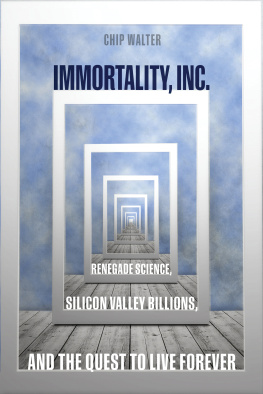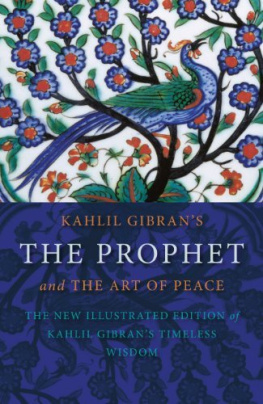The Allure of Immortality

UNIVERSITY PRESS OF FLORIDA
Florida A&M University, Tallahassee
Florida Atlantic University, Boca Raton
Florida Gulf Coast University, Ft. Myers
Florida International University, Miami
Florida State University, Tallahassee
New College of Florida, Sarasota
University of Central Florida, Orlando
University of Florida, Gainesville
University of North Florida, Jacksonville
University of South Florida, Tampa
University of West Florida, Pensacola


LYN MILLNER
THE ALLURE OF IMMORTALITY
An American Cult, a Florida Swamp,
and a Renegade Prophet


Copyright 2015 by Lyn Millner
All rights reserved
Printed in the United States of America. This book is printed on paper certified under the standards of the Forestry Stewardship Council (FSC). It is a recycled stock that contains 30 percent post-consumer waste and is acid free.
This book may be available in an electronic edition.
20 19 18 17 16 15 6 5 4 3 2 1
Library of Congress Control Number: 2015938069
ISBN 978-0-8130-6123-8

The University Press of Florida is the scholarly publishing agency for the State University System of Florida, comprising Florida A&M University, Florida Atlantic University, Florida Gulf Coast University, Florida International University, Florida State University, New College of Florida, University of Central Florida, University of Florida, University of North Florida, University of South Florida, and University of West Florida.
University Press of Florida
15 Northwest 15th Street
Gainesville, FL 32611-2079
http://www.upf.com
publication with a grant from Figure Foundation
a necessary verb curve dawn
For Jesse
Idealism... led them up strange backwaters and provided them with fantastic hallucinations.... It is better, perhaps, to be slightly mad with a sound heart, than to be sane without one.
Mark Holloway, Heavens on Earth:
Utopian Communities in America, 16801880
Contents
Preface
In New York State in 1869 lived a charismatic man named Cyrus Teed, who believed he was a prophet. He was thirty when an angel came to him in a vision and told him he was chosen to redeem humanity. Teed was distantly related to Joseph Smith, the founder of the Mormon Church, and no doubt influenced by his cousins success. He had hazel eyes, a bushy beard, and a determination to find followers, which he did, though much more slowly than he would have liked. Through a series of events and against great odds, his people, the Koreshans, came to southwest Florida to build a socialist, religious utopia. At its height, in 1903, the community numbered two hundred people. The last believer died in 1974.
The Koreshans quit their comfortable lives to follow a man to a hot, humid wilderness where they battled mosquitoes, snakes, alligators, wild hogs, freezes, fires, hurricanes, and illness to build a city. They left jobs, sold businesses, surrendered their possessions to the group, and, in many cases, deserted their families. Most of the followers were women, several of whom left their husbands.
They were not rough pioneer types. Their photos attest to that. They read Greek and formed an orchestra and took voice lessons and painted. They were educated, cultured, well-off, and yet their view of the world seems outlandish.
For one, they believed we live inside a hollow earth. We Live Inside was a slogan they printed on lecture announcements, lapel pins, and on the sign in front of their settlement in Florida. This motto was accompanied by an illustration of the earth, hinged open to reveal the continents and cosmos inside. Sometimes the Koreshans added a touch of humor to We Live Inside: Drop In and See Us.
The Koreshans were celibate, and the men and women lived apart. Today people point to this as proof that they were not forward-thinking. How did they expect the community to survive, people ask, if they didnt have children? The answer is this: the Koreshans believed that by conserving and redirecting their sexual potency, they would transform themselves into immortal beings. Having sex, by contrast, would ensure their mortality.
Inevitably, there were some children, and today there are living descendants who recall that their grandparents and great-grandparents were quiet on the topic of Koreshanity. One reason for the reticence was that, even as late as the mid-nineteen hundreds, the Koreshans were stigmatized. Most of them had been children when they joined. They left as soon as they were old enough. Even so, outsiders kept their distance, as if being a Koreshan were contagious. Therefore, most of todays descendants grew up with only a vague idea about the most important part of their elders lives.
The Koreshans survive in memory as a peculiar people from another time, their history evaporating in spite of the fact that they were part of one of the most important movements in America.
This book tells their story. Though parts of it seem unbelievable, it is a work of nonfiction. No detail or event was invented. Every quotation is from a written source or interview. Because all of the believers are dead, I leaned on archives, oral histories, letters, journals, meeting minutes, court testimony, photos, and a host of experts. Where possible, I sought confirmation from more than one source.
Howeverand this is a big howeverthe story depends in part on newspaper articles, most of which were written during the era of yellow journalism. In Teeds timemuch like todaypublishers sought to entertain more than inform. Wherever I used a newspaper as a source, I made it clear in the text or in an endnote or both.
I have done my best to write a book that is accurate and true, not only because I am a journalist but also because the overall theme of this book is belief: what we believe and why. The Koreshans faith shaped their lives and drove them to accomplish incredible feats. Their story shows how unshakable belief can be, even when it runs counter to reality. Even when fact bleeds through, belief has the power to triumph.
Today, the Koreshans are buried in two cemeteries not far from the settlement they built. Only one of their graveyards is accessible. It lies inside a gated golf course community near a river. Records show that their bodies were placed with their heads to the west and their feet to the east, consistent with the belief that on Judgment Day, the dead will rise and face the morning sun.
Prologue
The Man in the Bathtub
On Christmas Day of 1908, Dr. Cyrus Teed was laid out lovingly in a zinc bathtub his followers had built exactly to the dimensions of his short frame. His eyes were closed, his face expressionless, his skin dark, and his swollen tongue protruded through enlarged, turned-out lips. They draped him with a white sheet from the waist down and left his torso nude. By all outward appearances, he was dead, and had been for three days, but the followers said he was in a trancesuspended animation, they called it.
Next page

















